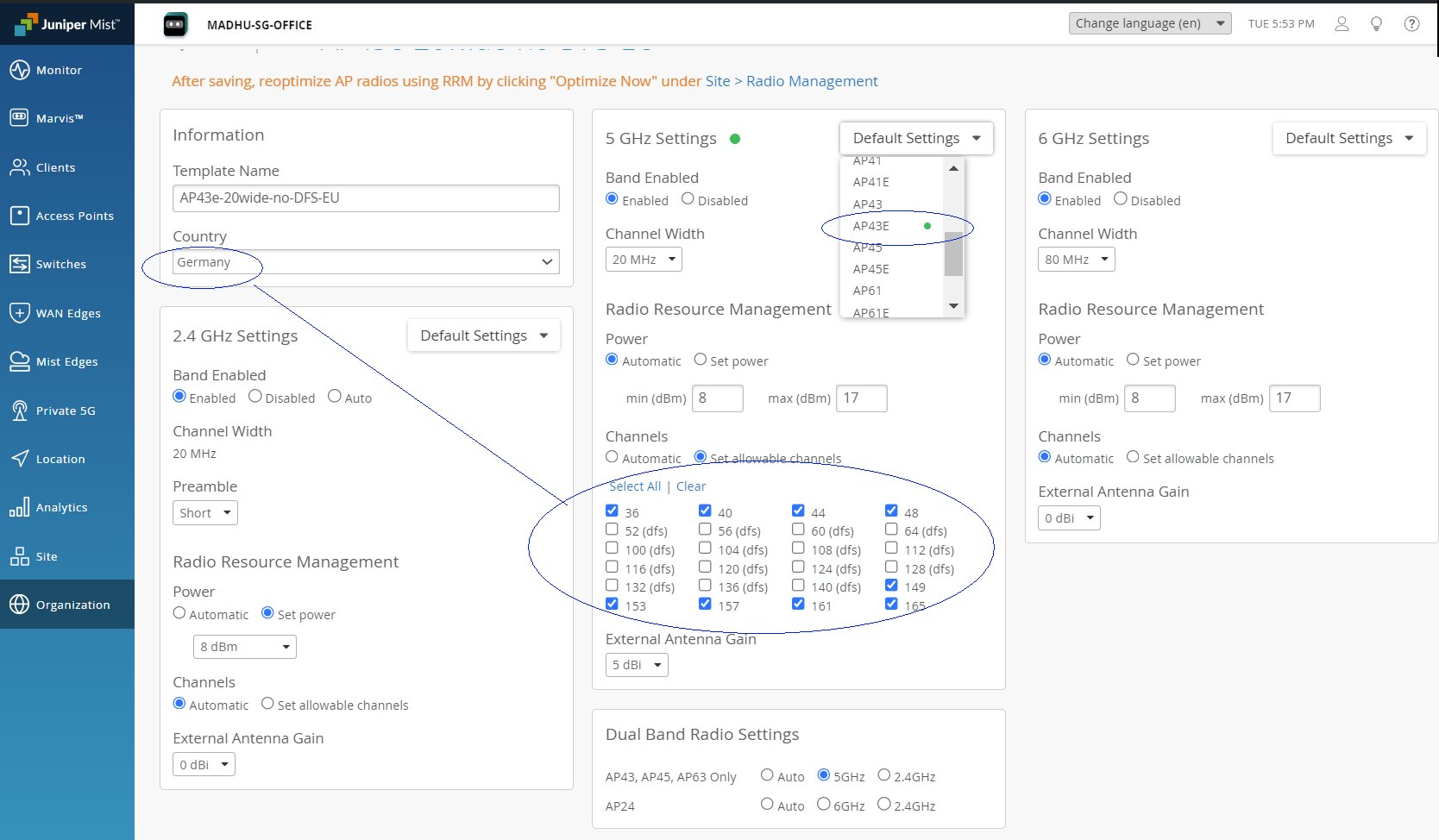Radio Management
Juniper Mist AI-driven radio resource management (RRM) describes machine learning technology available in both Juniper APs and on the Juniper Mist cloud. RRM is enabled by default and most of the optimizations occur automatically, in the background.
On the cloud, RRM collects data from multiple APs in the WLAN or site, gathered as a part of Service Level Expectations (SLE) such as the Wireless Capacity SLE as shown in the following video.
Radio frequency environments are inherently complex and therefore challenging to control and optimize for the efficient transmission of data. Since the inception of radio frequency, or RF, radio resource management, also known as RRM, has been a long-standing technique used to optimize the RF radio waves that transmit network traffic in wireless LANs. However, multiple interference sources like walls, buildings, and people combined with the air servings of transmission medium make RRM a challenging technique to master.
Traditionally, site surveys have been used to determine the optimal placement of Wi-Fi access points and settings for transmit power, channels, and bandwidth. However, these manual approaches can't account for the dynamic nature of the environment when the wireless network is in use, with people and devices entering or leaving and moving about. Additionally, this challenge is compounded with random RF interferences from sources like microwave ovens, radios, and aircraft radar, to name a few.
But what if the wireless network itself could perform RRM on its own? What if it could detect and respond to both interference sources, as well as the movement of people and devices, and adjust the radio settings in real time to provide the best possible wireless service? That's exactly what Juniper has done with the AI-driven MIST wireless solution, using advanced machine learning techniques. Specifically, MIST uses reinforcement learning to perform RRM. In a nutshell, a reinforcement learning machine, or agent, learns through an iterative trial and error process in an effort to achieve the correct result.
It's rewarded for actions that lead to the correct result, while receiving penalties for actions leading to an incorrect result. The machine learns by favoring actions that result in rewards. With MIST wireless, the reinforcement learning machine's value function is based on three main factors that lead to a good user experience.
Coverage, capacity, and connectivity. A value function can be thought of as an expected return based on the actions taken. The machine can execute five different actions to optimize the value function.
These are adjusting the band setting between the two wireless bands of 2.4 GHz and 5 GHz, increasing or decreasing the transmit power of the AP's radios, switching to a different channel within the band, adjusting a channel's bandwidth, and switching the BSS color, which is a new knob available to 11 AX access points. RRM will select actions with maximum future rewards for a site. Future rewards are evaluated by a value function.
The various actions taken by the learning machine, such as the increase of transmit power or switching the band from 2.4 GHz to 5 GHz, together represent a policy, which is a map the machine builds based on multiple trial and error cycles as it collects rewards, modeling actions that maximize the value function. Again, keep in mind that the value function represents good wireless user experience. As time goes on, even if random changes occur in the environment, the machine learns as it strives to maximize the value function.
The benefits of using reinforcement learning are obvious. A MIST wireless network customizes the RRM policy per site, creating a unique wireless coverage environment akin to a well-tailored suit. While large organizations with multiple sites replicate their many locations as copy exact, these sites will naturally experience variances despite best efforts.
Reinforcement learning easily fixes this, delivering real-time, actively adjusting, custom wireless environments. We hope this episode helped to uncover some of the magic and mystery behind our AI-driven network solutions.
RRM applies continual reinforcement learning to analyze as many as 30 days' worth of performance data. Thus it can identify event-driven trends that occur of the course of a day, week, or month, for example, to deprioritize a channel that has been observed to encounter frequent interference from some sort of neighboring device. In addition to creating a long baseline, this continual observation and learning acts to prevent the kind of system drift and manual intervention that is inherit to static Wi-Fi implementations.
At the level of individual APs, RRM ensures optimal channel optimization by reacting to events like channel interference. It can also automatically, and immediately react to radar hits, and adjust transmit power or channel usage.
|
Global RRM |
Local RRM |
|---|---|
|
Scheduled automatically runs nightly, per site. |
Reacts to local events (relative to the AP) |
|
Manual is triggered per radio band |
Cloud independent |
|
Uses reinforcement learning |
Ad hoc – runs as needed |
|
Leverages a multi-day dataset to make informed decisions |
Includes the following events:
|
Another feature of RRM is called dual-band radio management. Here, RRM leverages the third (or fourth) radio on the AP to identify unnecessary 2.4-GHz radios and automatically convert them to the 5-GHz band (or 6 GHz). This is particularly useful in high-density environments, and occurs without causing the neighboring APs to increase their transmit power.
To manage dual-band, local RRM works with neighboring APs to assess 2.4-GHz radio signal strength and density (how many 2.4-GHz radios are transmitting in a given area). If a particular AP model does not support dual-band, RRM can disable the 2.4-GHz radio rather than convert it to drive traffic to the 5-GHz band. See Radio Management (dual-band).
At both the organization level, and the site level of the configuration, you can override automatic settings by manually configuring which radios to disable, setting the channel width and availability, etc.
As shown in Figure 1, some defaults are tied to the country selection.

